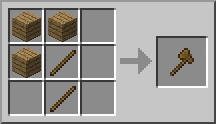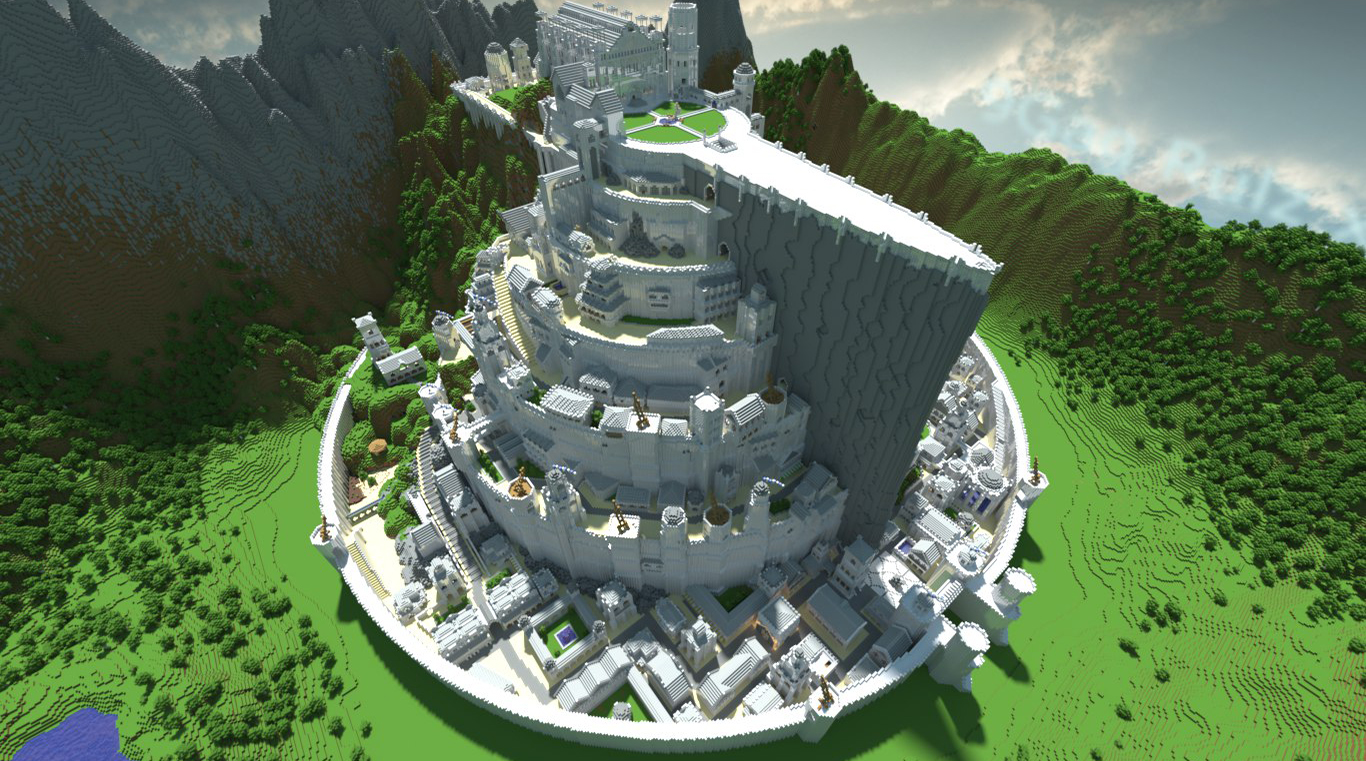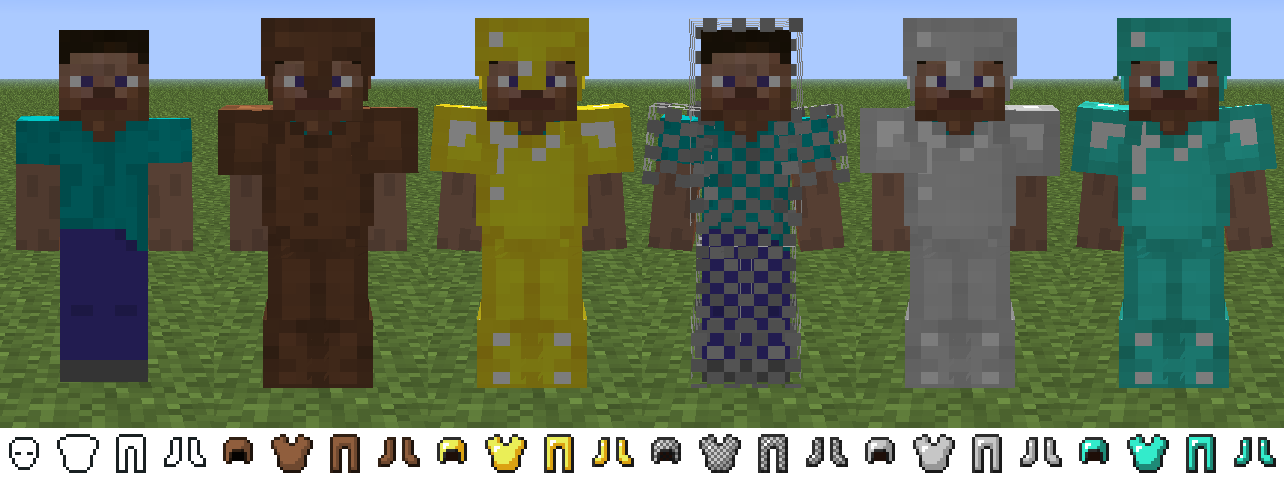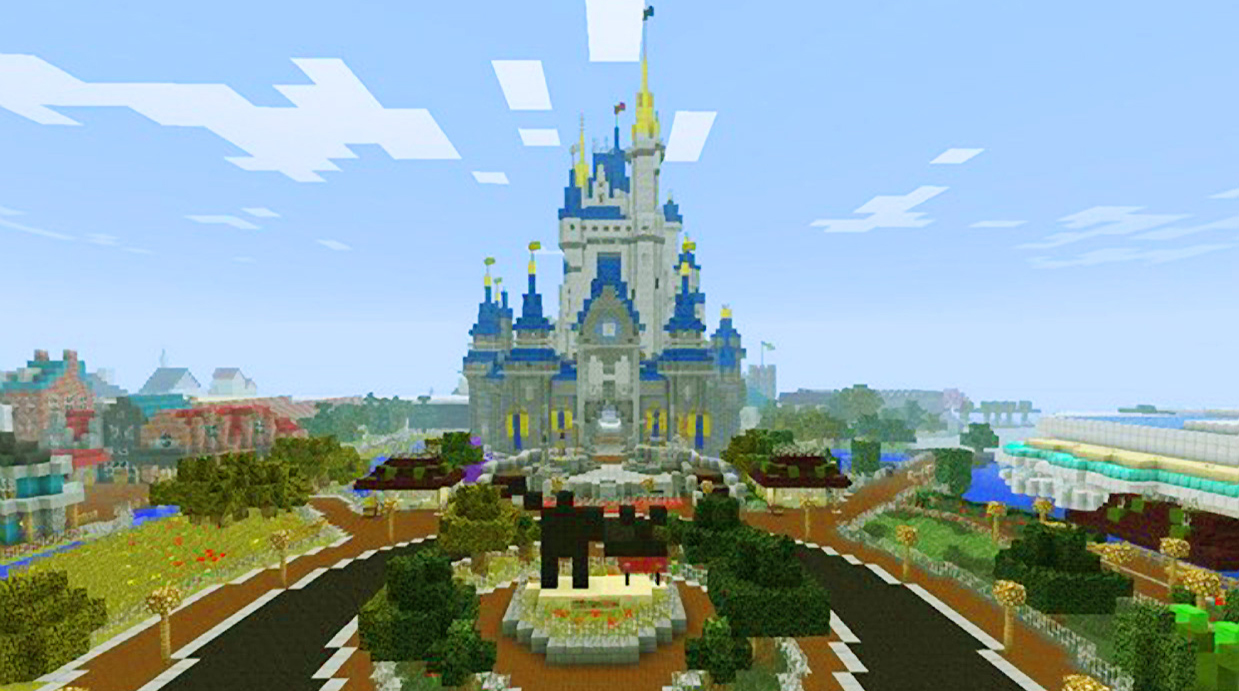

Minecraft is a game entirely made up of blocks. You dig blocks, you build with blocks, you block with blocks, in short, plenty of blocks. It's possible to change the appearance of the blocks by using texture packs that have been created for players put off by the 16 bit pixel look of the game.
Each block is 16x16 pixels and a metre cubed, and some of them even have animations, such as the water, lava or gateways.
There are approximately 150 different blocks in Minecraft, suffice to say a vast selection.
On a standard map you will find blocks of rock, grass, snow, earth, water, lava, sand, gravel, gold ore, iron ore, diamond ore, lapis lazuli ore, redstone, clay, coal, wood, leaves, cactus, red and yellow flowers as well as brown and red mushrooms. Natural blocks.
In the classic mode, players can use the natural blocks to build what they want, as well as the bookshelf, sponge, coloured wool, stone brick, obsidian and moss stone. If you are ever the server operator, you will also have access to the material bedrock, and some servers even let you have grass and liquids.
Of course, it is possible for the player to create types of blocks that are not found naturally, as well as various structures like stairs, workbenches, paintings, bookshelves, ovens and plenty of others. Redstone, diamond and lapis lazuli can be found deep down in mines and you can make obsidian by putting water in contact with lava. It goes without saying that the blocks that spawn monsters appear automatically in the dungeons.
Since the Halloween update, some new types of block are available, such as netherrack, glowstone and soul sand which can be found in the Nether, a zone that can only be accessed if the player creates a portal. Pumpkin blocks grow pretty much everywhere and can be transformed into lanterns.
Opacity is a property of the blocks, it determines what light comes through them as well as the result of their collisions. It impacts how you can interact with them.
Some blocks are transparent and there are several kinds like this.
- Plants: sapling, dandelion, rose, brown mushrooms, red mushrooms, wheat, sugar cane.
- Liquids: water, flowing water, lava, flowing lava.
- Blocks: leaves (opaque when the graphic options are set to "fast"), glass, slabs, monster spawner, wood or stone stairs, farmland, snow, ice, cactus, fences.
- Others: torch, fire, redstone wire, sign, wooden or iron doors, ladder, rails, lever, wooden or stone pressure plates, redstone torch off/on, stone button, portal.
Some blocks have specific properties that prevent them from being used in certain ways.
- Blocks like snow, door, button, ladder, lever, rail and pumpkin can only be placed on opaque objects.
- Monsters only appear on opaque blocks and in open or transparent spaces.
- Fireballs only really set off fire on opaque blocks.
- Mushrooms only grow on opaque blocks.
- The position of ovens and chests depends on the opacity of blocks adjacent to them.
- It is impossible to open a chest in an opaque block is on top of it.
- Transparent blocks can't catch on fire.
- Transparent blocks influence the behaviour of water.
- The opacity of blocks influences the behaviour of redstone circuits.




 Minecraft: Armour Guide, Recipes and Stats – Diamond, Golden, Iron and Leather
Minecraft: Armour Guide, Recipes and Stats – Diamond, Golden, Iron and Leather Minecraft: Top 10 Famous Monuments - Notre-Dame, Disney World, Tower Bridge
Minecraft: Top 10 Famous Monuments - Notre-Dame, Disney World, Tower Bridge Minecraft - The Game Modes: Creative, Survival, Adventure and Hardcore
Minecraft - The Game Modes: Creative, Survival, Adventure and Hardcore Minecraft: Tools Guide, Recipes and Stats – Axe, Shovel, Pickaxe and Hoe
Minecraft: Tools Guide, Recipes and Stats – Axe, Shovel, Pickaxe and Hoe Minecraft: The Guide to Mounts and Vehicles - Horse, Pig, Boat and Minecart
Minecraft: The Guide to Mounts and Vehicles - Horse, Pig, Boat and Minecart